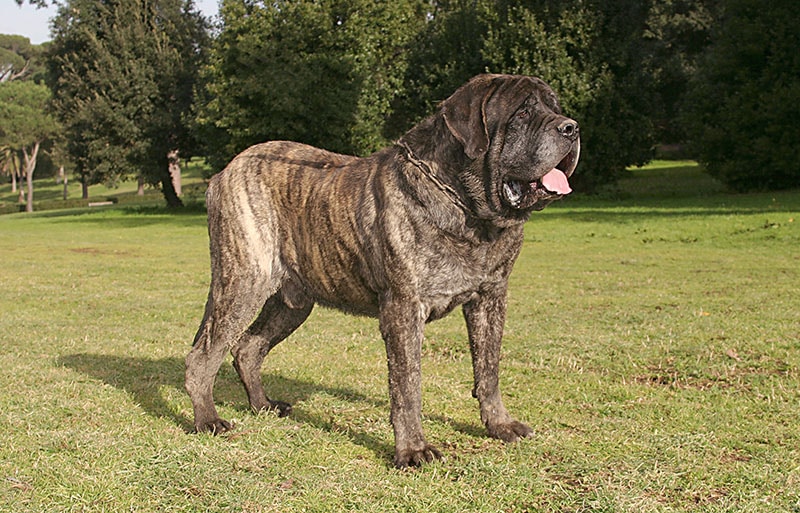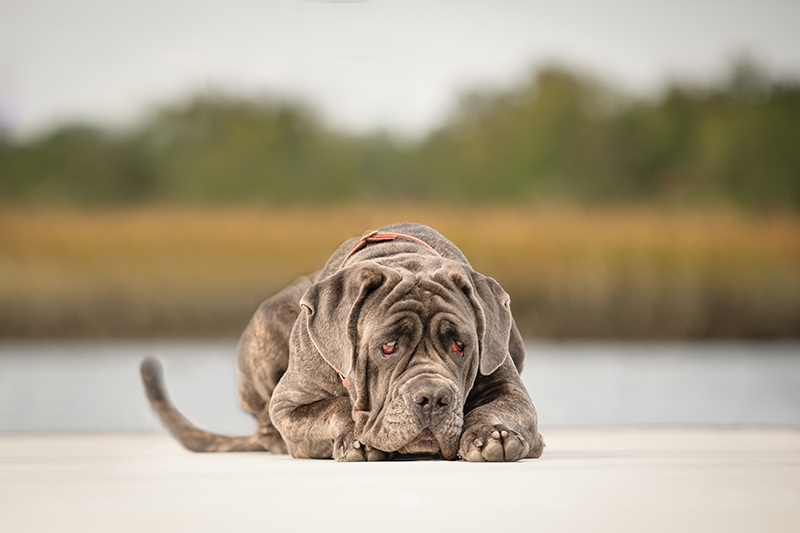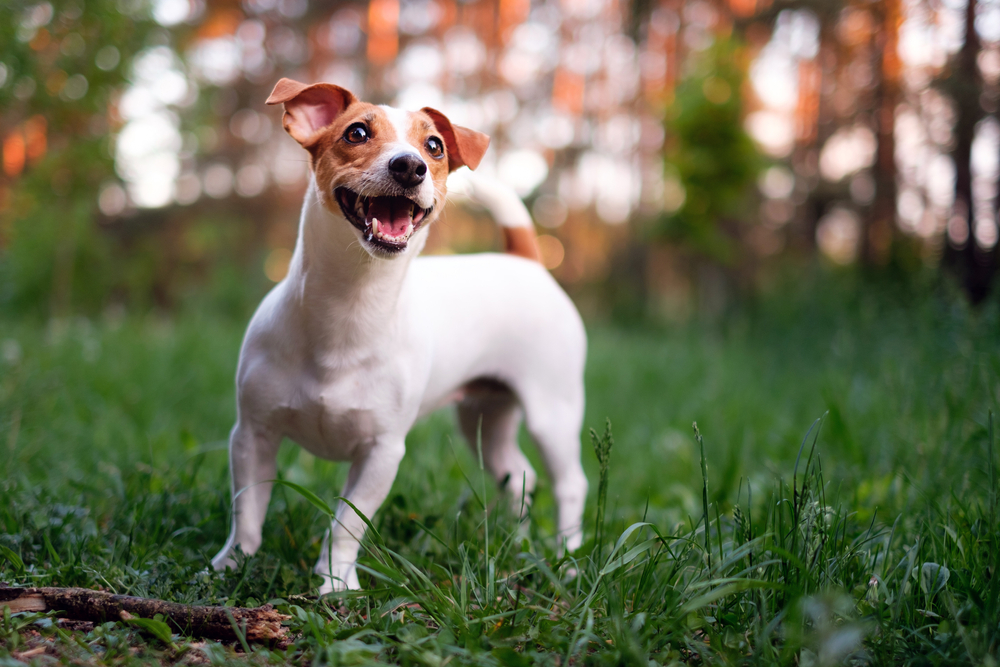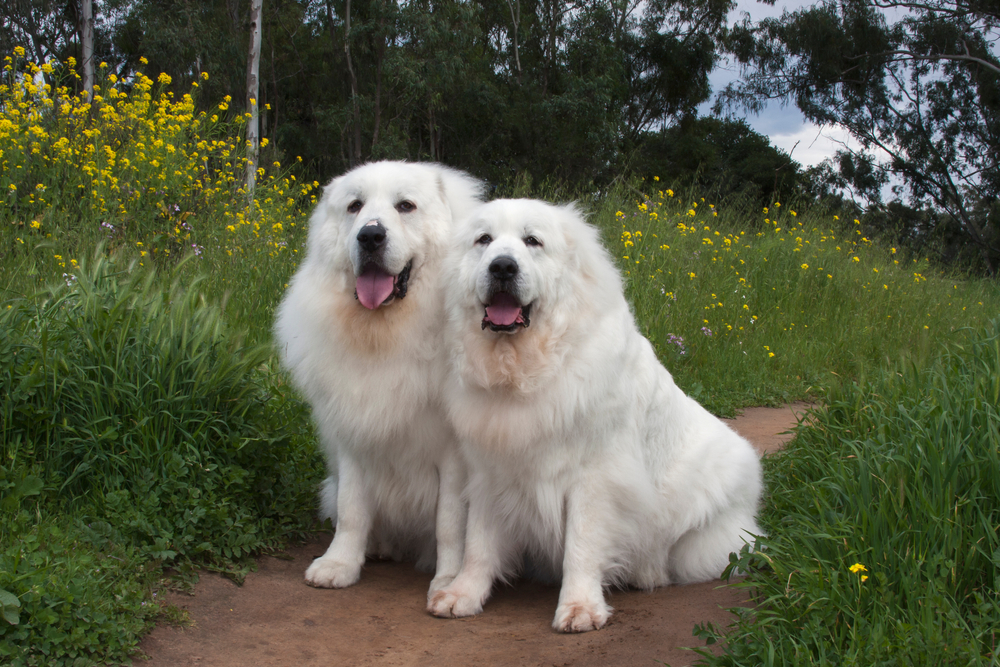Click Below to Skip Ahead
With the ancient lineage of a war dog, the English Mastiff is an intimidating canine. Its tall stature and rugged appearance contrast the dog’s loving and loyal demeanor. Mastiff puppies are energetic and playful, but when they reach maturity, they calm down and seldomly bark unless they feel threatened by a stranger. The dogs love human companions and socialize well with children and other animals who are raised with them.
Breed Overview
Height:
27-32 inches
Weight:
130-220 pounds
Lifespan:
6-10 years
Colors:
Fawn, apricot, and brindle
Suitable for:
Families with older children
Temperament:
Curious, affectionate, loyal, and calm
As the largest breed of the canine kingdom, Mastiffs can weigh over 200 pounds. Its size makes people apprehensive about approaching the animal, but the dogs aren’t known to be overly aggressive. If you have a home with a fenced-in yard and don’t mind cleaning up drool, the Mastiff can be a loving companion for many years.
Mastiff Characteristics
Mastiff Puppies
Since Mastiffs are vulnerable to several medical conditions, you must be careful when selecting a puppy that hasn’t been examined by a vet. Animal shelters and adoption agencies typically have their dogs vaccinated and tested, but it’s important to ask several questions about the dog’s health and medical history before making a purchase. Rescue puppies seized from abusive homes or illegal fighting clubs require more training and time to develop social skills if they were born in unfavorable conditions
Ultimate Mastiffs are gentle giants that love being with their families. They create strong bonds with older children, and are very loyal and affectionate.
Temperament & Intelligence of the Mastiff
Although they retain their protective instincts and make excellent guard dogs, Mastiffs generally have a calmer personality than other large breeds. Aggression isn’t an issue with the dog, but it requires training to act responsibly around strangers and small children. They’re intelligent animals who love interacting with their human families, but they tend to get anxious when they’re left alone for long periods.
Are These Dogs Good for Families?
Although they’re enormous beasts, most Mastiffs have hearts of gold and love socializing with human owners. Because of their size, they’re not ideal pets for families that live in small apartments without fenced-in yards. Mastiffs behave well with children, but you shouldn’t leave them alone with toddlers or babies. The dogs are so large that even their tale could injure a small child.
If you bring a Mastiff into your family home, you may have to rearrange the furniture and secure your valuables to give the dog room to roam. They do not bark excessively, but you must get used to their loud snorts and snoring if the animal sleeps in your bedroom.

Does This Breed Get Along with Other Pets?
Mastiffs interact well with other dogs and pets, but you have to train them at a young age to help them adjust to other animals. If you raise a kitten and Mastiff together, they can become lifelong friends, but an adult cat that enters the home of a full-grown Mastiff may experience a battle for dominance.
Mastiff breeders recommend buying a male and female if you want two dogs. Two male Mastiffs can be trained to tolerate each other, but they’re more likely to get in fights over who is supposed to be the alpha animal.
Things to Know When Owning a Mastiff:
Food & Diet Requirements
Mastiff puppies grow rapidly and reach adulthood when they’re around 18 months old. The amount of food the dog requires depends on its age and weight, but typically healthy adult Mastiffs need six to eight cups of dry dog food every day. Mastiffs are prone to obesity, and you should schedule specific times to feed the dog rather than leaving a bowl of food around all day. Feeding the animal twice a day can help manage its weight.
When researching different dog food brands, try to buy premium food that uses meat as the primary source of protein. Mastiffs are infamous for their flatulence, and you may have to experiment with several brands before you find one that does not upset their stomachs. Avoid brands that use artificial flavors, unnecessary fillers, and preservatives. Since you’ll need a sizable supply of food to feed the beast, you can shop at big box stores or use a delivery service to order bulk amounts of dog food.
Because of their massive bodies, they can easily knock over food bowls and water dishes. When the dog laps up water, it goes all over the kitchen, and you should be prepared to clean up plenty of spills. Look for dishes with a low center of gravity that can be secured on a small platform or holder.

Exercise
A small fenced-in yard is all a Mastiff needs to stretch its legs and play with toys. The dogs require a moderate level of physical activity, and they can stay fit by going for a 30-minute walk in the morning and evening. Mastiffs don’t react well to hot weather, and they struggle with overheating if they’re not kept hydrated during exercise. If you must walk the dog on a blazing day, be sure to bring along a large water bottle.
Although they don’t require too much exercise, they can become destructive if they’re neglected. Without plenty of chew toys, Mastiffs will find something in your house to gnaw on. If you play with them every day and supply them with toys, they’re less likely to eat your couch or destroy a video game controller.
Mastiffs are not good jogging partners, and too much exercise can be bad for their joints and hips. When they’re more energetic as puppies, you must be careful to keep them from jumping on furniture or sprinting up the stairs. Even young Mastiffs are heavier than other breeds, and their weight keeps them from being as agile as other dogs.
Training
Training is critical with Mastiffs, and you should start obedience training when they’re puppies and expose them to as many animals and people as possible when they’re young. They’re smart creatures and learn tricks fast, but they can become bored and anxious if the training isn’t stimulating. Training the dogs with shorter sessions and plenty of tasty treats can encourage them to participate with more interest.
When they’re fully trained, you can worry less about them acting out toward strangers. However, the dogs can display a stubborn side from time to time, and you must reiterate your commands sometimes to show the animal who is in control. Letting a 200-pound dog do whatever it wants can be dangerous for you and your family.
Grooming ✂️
Mastiffs require minimal grooming, and they shed most of their fur in the fall and spring. A light brushing once or twice a week can keep their coats healthy and minimize the loose hair.

- You might also be interested in: 11 Best Dog Wipes: Reviews & Top Picks
Health and Conditions
With the proper care, Mastiffs can live healthy lives. They’re susceptible to life-threatening conditions, but some of the conditions can be avoided with appropriate breeding and testing procedures. If you adopt a Mastiff, you should make an appointment with the vet for a complete health screening. Sending blood samples off to a testing lab is more expensive than a typical veterinary visit, but the misery and expense involved with treating a serious disease are much worse.
- Canine Multifocal Retinopathy
- Arthritis,
- Hip dysplasia
- Progressive retinal atrophy
- Cystinuria
- Gastric torsion
- Osteosarcoma
- Epilepsy
- Pulmonic stenosis
- Mitral valve disease
Male vs Female
Male and female Mastiffs are similar in temperament, but they display different behaviors as adults. If you want a lap dog (a large one) that follows you around the home constantly, you’ll prefer a male dog. Males bond closer with humans, but they’re also more likely to become bored if they’re not entertained.
Both sexes respond to training, but females are easier to train and become less distracted during repetitive exercises. However, if a female is not fixed, she can become destructive and stubborn when she’s in heat. Females are calmer and more likely to find a spot to nap away from loud humans. If you travel frequently, you’re better off having a female alone at home than a male. Males dislike being away from humans, and they tend to take their aggression out by ransacking your belongings.
3 Little-Known Facts About the Mastiff
1. A Mastiff hitched a ride on the Mayflower.
Before the dog’s historic voyage to America, the Mastiff defended the English from Ceasar’s Roman invaders. Ceasar took the dogs back to Rome, and they were used as guard dogs for sheep herds and wealthy citizens.
2. Mastiffs are world record holders.
In 1989, a hefty Mastiff named Zorba set the record for the world’s heaviest dog at 343 pounds. The dog was 37 inches tall and measured over eight feet from head to tail. Guinness World Records no longer recognizes the fattest or skinniest dogs in history due to the medical issues associated with obesity and malnutrition.
Guinness frequently updates their guidelines, and they only accept applications from dog owners if the dog has a clean bill of health and is at least 12 months old.
3. Mastiffs almost became extinct in England during World War II.
In the midst of war, England experienced considerable supply problems and began rationing goods. Government officials persuaded some English citizens to euthanize their dogs to conserve supplies. Luckily, many kind-hearted owners refused the advice and continued to feed and care for their pets. After the war ended, the Mastiff population slowly rebounded away from the brink of extinction.
Conclusion
Mastiffs have an almost mythical reputation for being out-of-control beasts, but the legends are far from the truth. Although their heritage includes massive canines that fought lions and humans, the dogs are gentle giants who enjoy spending time with humans. Their strength and robust appearance sometimes overshadow their calm personalities, but their imposing stature is advantageous when you need an alert and intelligent dog to protect your family and home.
Owning a Mastiff requires substantial training, plenty of food, and a considerable supply of towels to wipe up spills and drool. They snore loudly and can clear a room with their flatulence, but they’re dedicated to their owners and would do anything to please them. With the proper diet and exercise, Mastiffs can love you and entertain you for several years.
Featured Image Credit: Michelle Cavanagh, Shutterstock












